March 8th 2023, Panama City.
This is an interesting place. Some random thoughts.
In the core of inner city Panama, there are at least three distinct cities. The first is the big, brash, reaching for the skies modern city with its gleaming, glass facade skyscrapers mirroring everything around them. The second is the old city with its fortified promenade jutting into the sea, all narrow streets, cathedral and older government buildings, many dating from the 19th century, and some from before. And the third is what’s between them — which is the inner city poor and the buildings in which they live.
On the way in from the airport, the taxi driver said that the average take home pay in Panama was about $600 a month and that most people, whether better off, or less so, were actually very close to that average. But it’s clear from simply wandering about here that there are also people who are very much better off than a bit above the average. Michael, a travelling retiree from Rhode Island, says that Panama is now favoured by a lot of elderly Americans (males), many of whom, he said, have young local partners. “It’s not yet like the Philippines but it’s getting that way.” I didn’t notice but that’s certainly his reading of the situation.
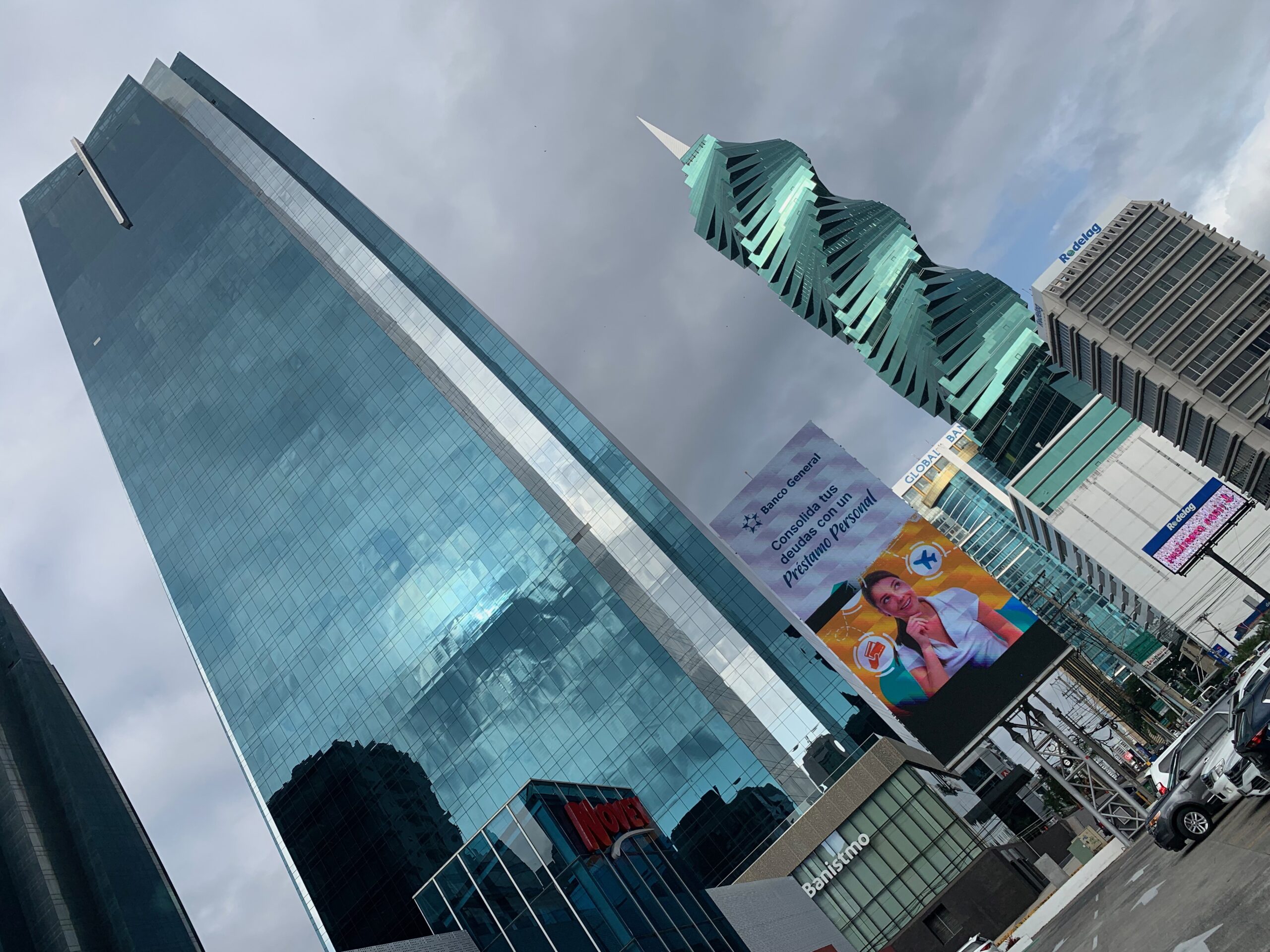
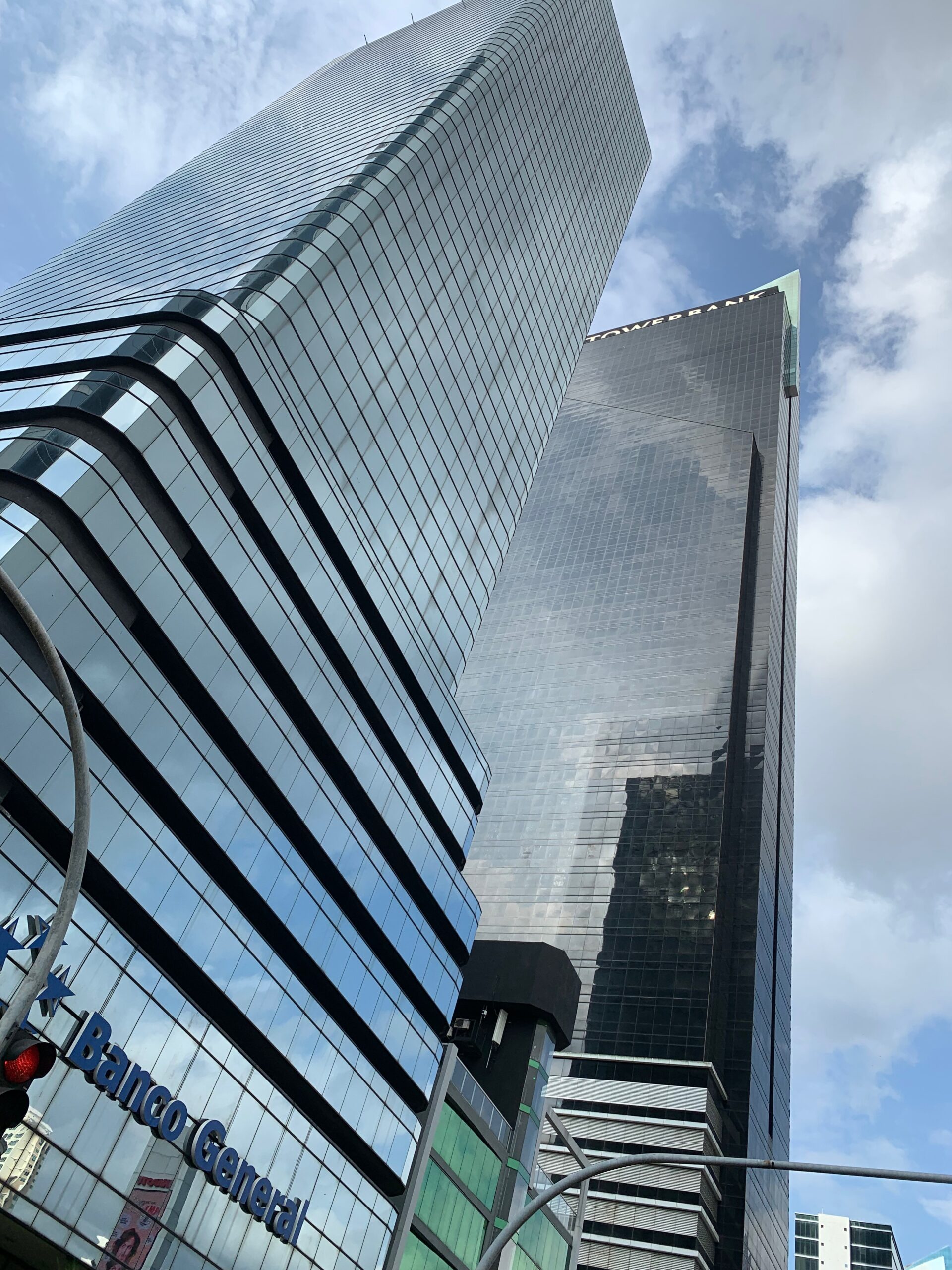
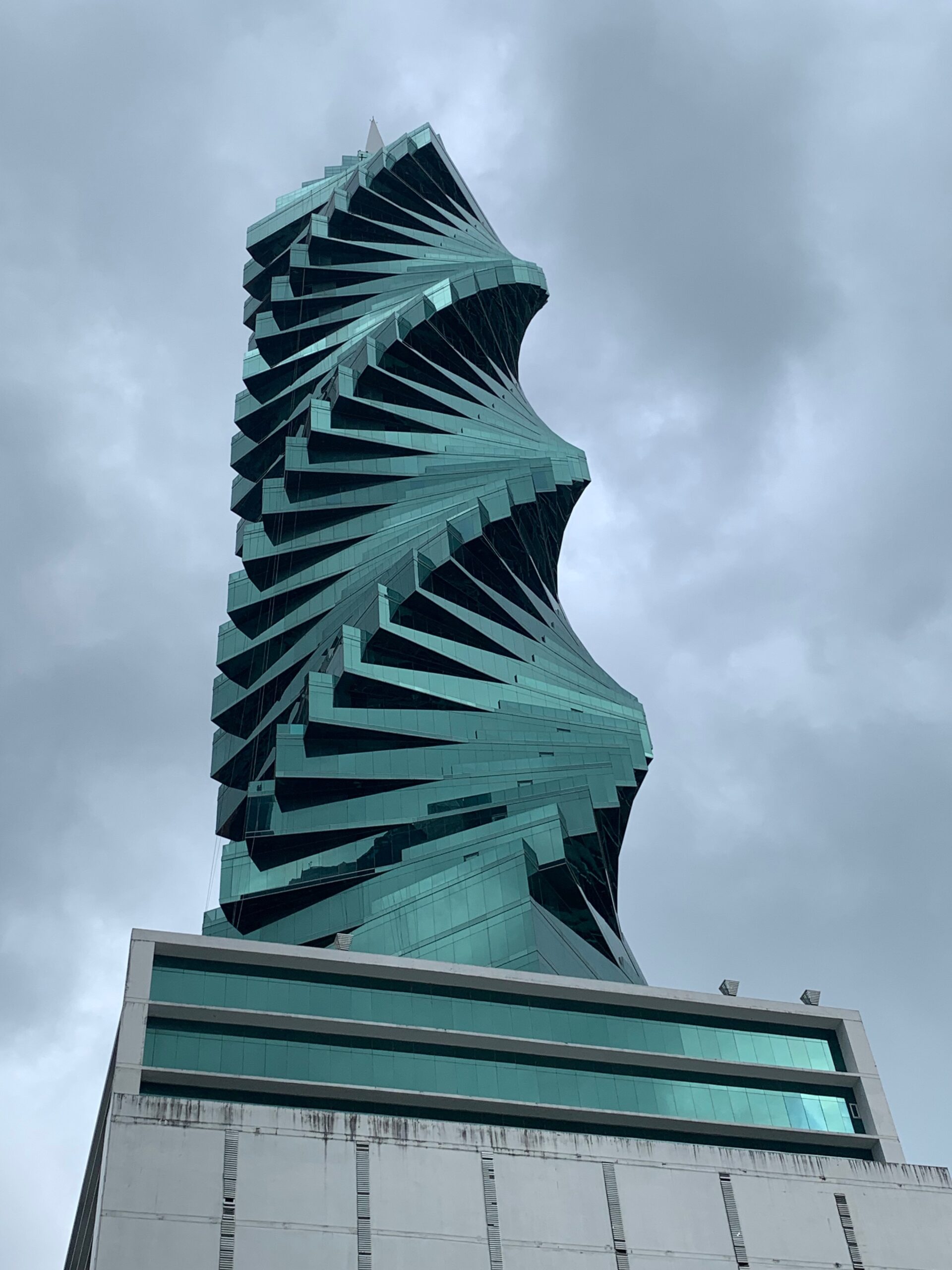
The materialism is undeniable, however. The place is awash with large four-wheel crossover cars, Mercs, Lexus, Jags, Porsches and the like. It’s also awash with banks and other financial services companies, and the lawyers who facilitate them. . . Skyscrapers 60 to 70 stories tall are huddled together in downtown clumps, with inner-city freeways swishing this way and that between them. The place has a Dubai feel to it. It’s no surprise to learn that one of the tallest buildings bears the name Trump — a 68 storey “ocean club international hotel and tower”.
The hostel in which I am staying, a hippy-ish kind of place named CulturaHumana Living and Guesthouse, does it for me, thanks. Beside us is a most extraordinary green glass skyscraper, the 52 storey, 243 meter tall F&F Tower. Imagine a stack of books, lying flat one on top of the other, and each one twisted an inch or so in the same direction, creating a sort of spiral stairs effect. It is known locally as the Corkscrew and is the nineth tallest building in the city. It’s quite beautiful; eye catching for sure. The shape of the Corkscrew marks it out for special attention but in terms of size and modern feel, it’s not the least unusual: all around it are other glass wall style skyscrapers, and similarly tall residential apartment blocks. Most of the office buildings are either local outposts for international banks, or other corporate entities, or multiple occupancy buildings, the occupants in many cases being linked either the legal profession, smaller financial institutions, or shipping. And all around them are shopping malls, replete with shouty chic brand names — Gucci, Hermes, Rolex, Hilfiger, Dolce and Gabbana, Chanel and Louis Vuitton. There are more than a few large scale poster ads displaying beautiful people whose single message is “you want to be like me”. The malls are air-conditioned and soulless places. Something inside you dies when you walk into them.
I guess the notoriety exposed by the Panama Papers explains some of this. The place is a haven for dodgy stuff — stuff that may not be illegal here, but probably is back home, wherever home is for the principals behind the dodgy-ness. Banks are notoriously reluctant, unless under threat of dire consequences, to turn away money, whatever the source. And with Colombia next door, all the loot related to its most notorious “business” has to end up somewhere.
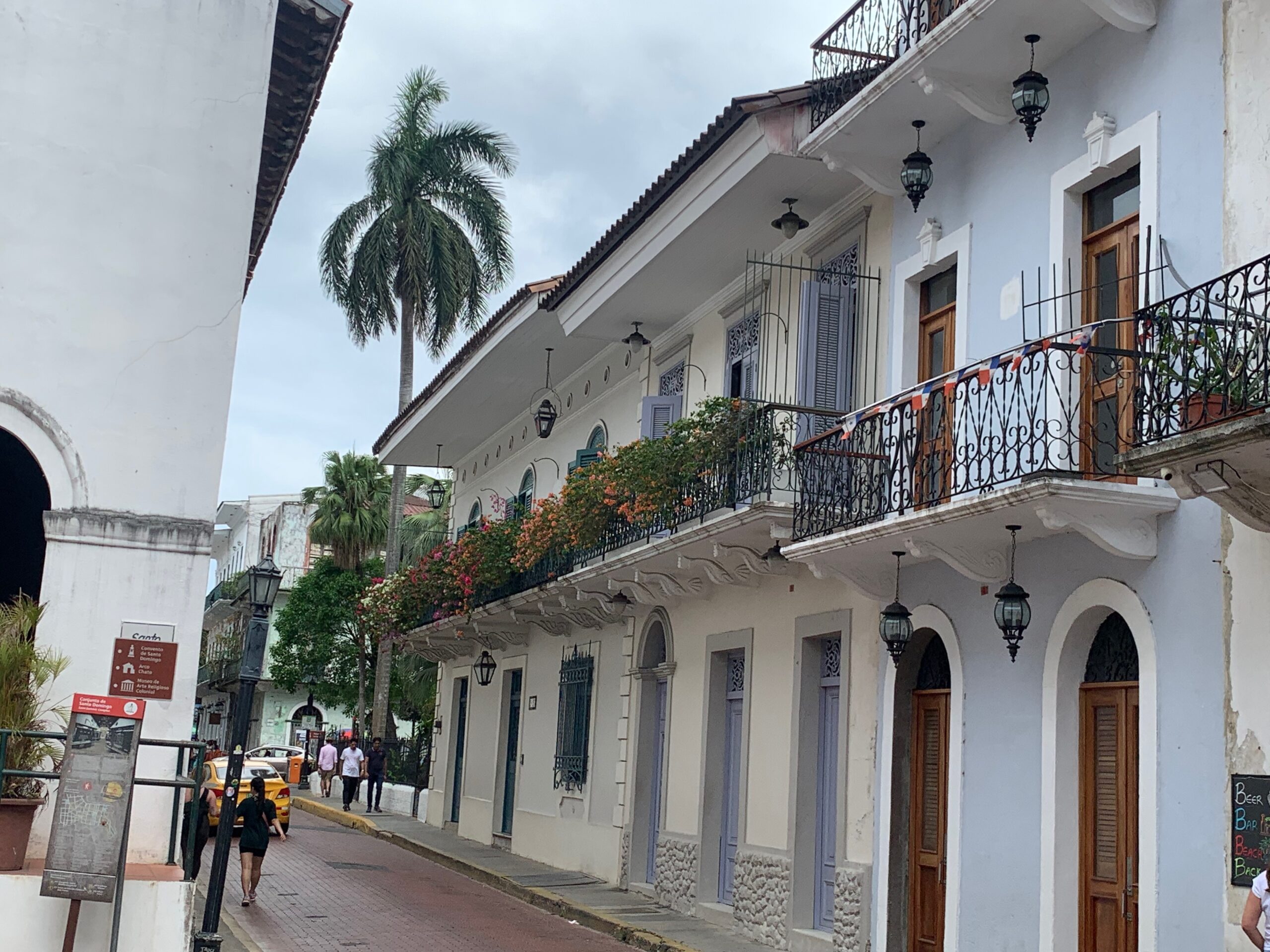
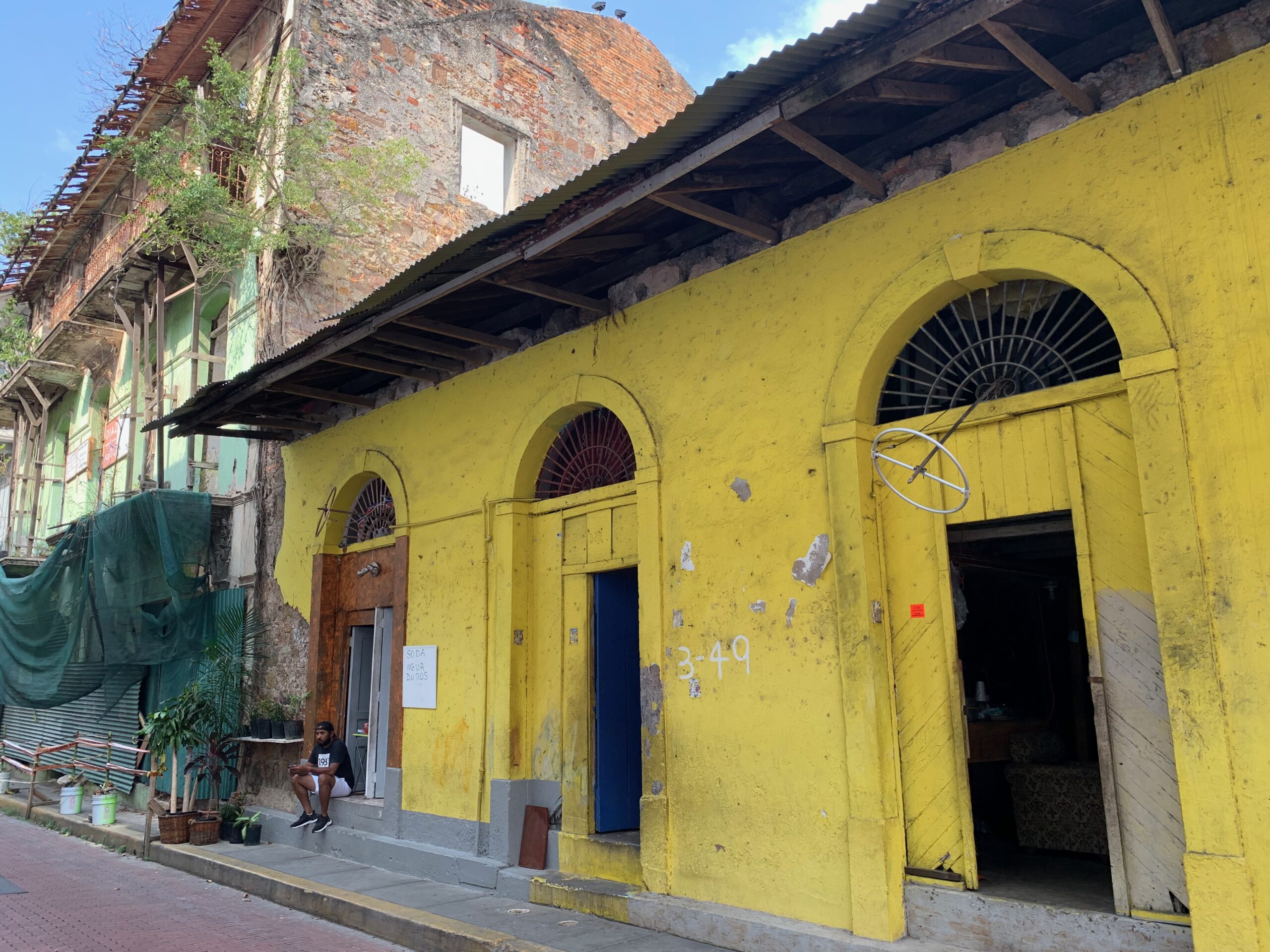
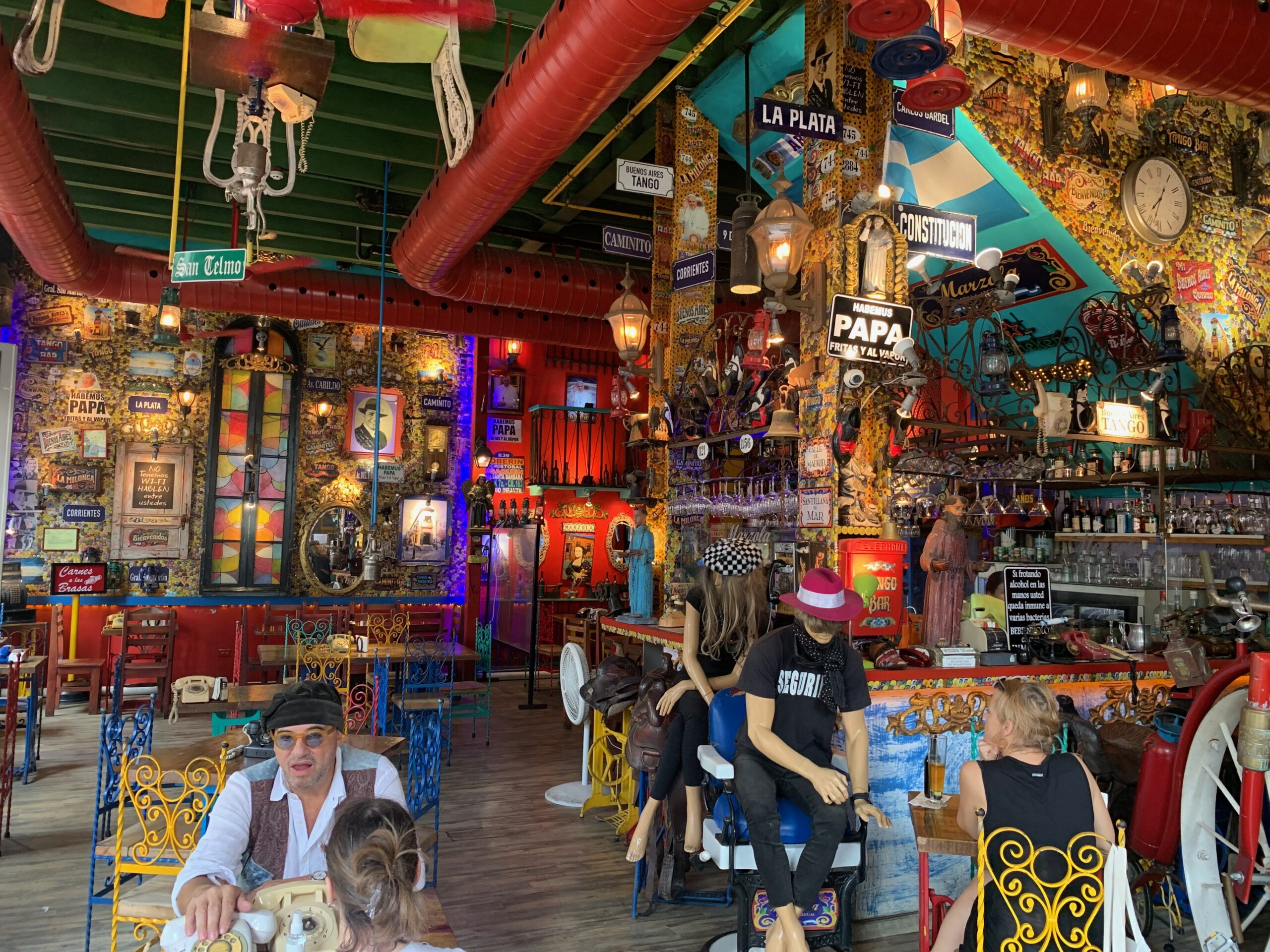
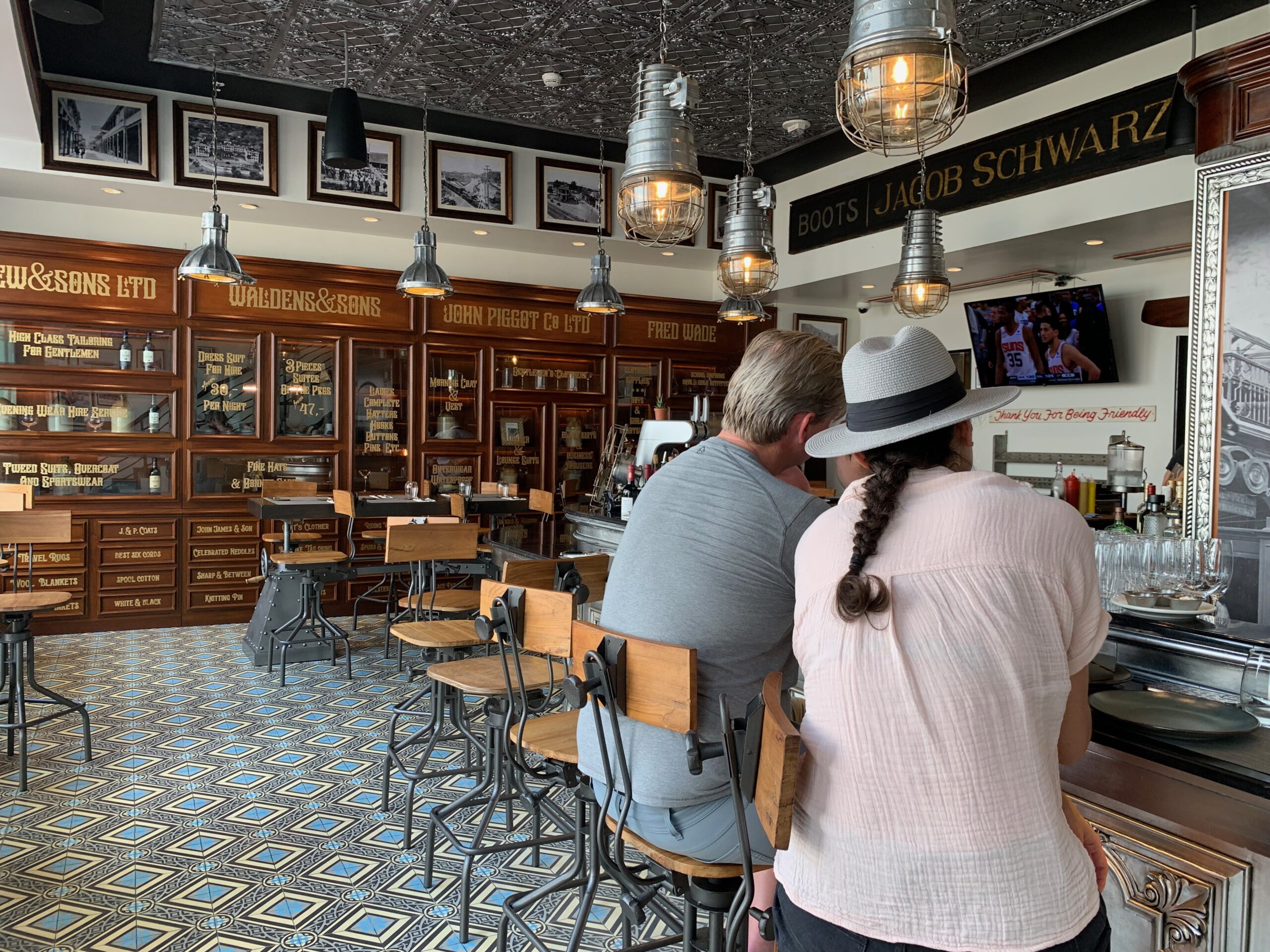
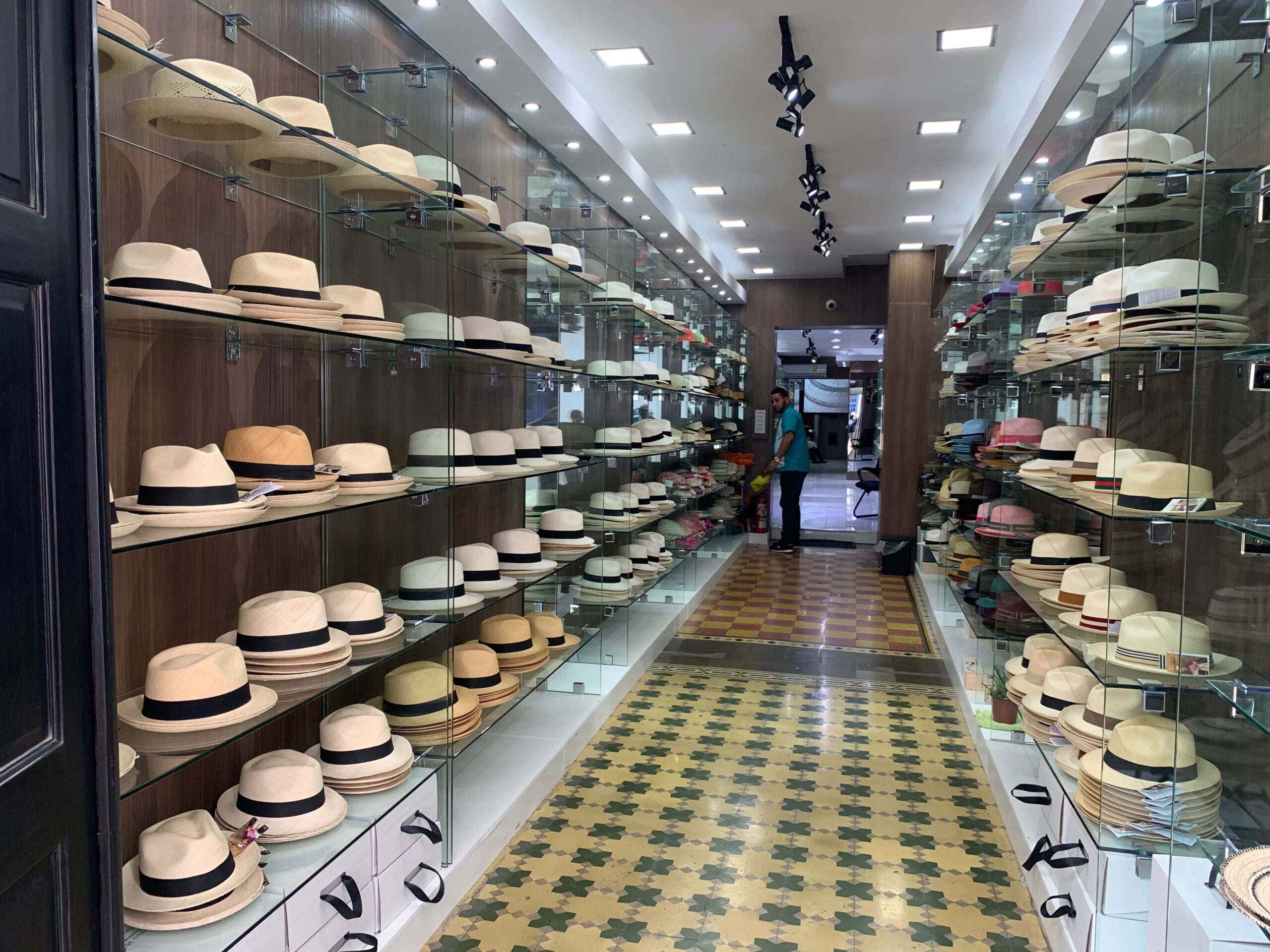
Panama’s old city is what you’d expect: a grid pattern of narrow streets and squares with mainly three and four storey high buildings which have a 19th century or vaguely colonial feel to them. Physically, the area is defined by a promontory which in recent years has been embraced by a ring road bypass road built on stilts in the sea, compromising the view from the promontory. Despite that, the area is a delight of cafes, restaurants, tourist shops, Panama hat shops (of course!) and some quite chichi independent fashion outlets. And there’s the cathedral (an architectural disappointment and surprisingly plain inside) and official buildings and museums (the Museo del Canal is definitely worth a visit). Many of the buildings have been done up in recent years and look superb, while quite a few others remain derelict. But local tensions are also evident: in one rectangular open space where clearly plans are afoot, large posters say no to building and no to gentrification.
Between the two is an area named La Exposición, a residential and shopping area for the Panamanians whose fortunes have not been lifted by the rising tide of prosperity. Street after street is grubby and lined with broken down retail buildings and apartment blocks that look like tenements. Garbage and broken things are strewn everywhere, facades are dingy, cracked, stained and peeling and the streets are filled with discarded broken things. Many of the people look broken too.
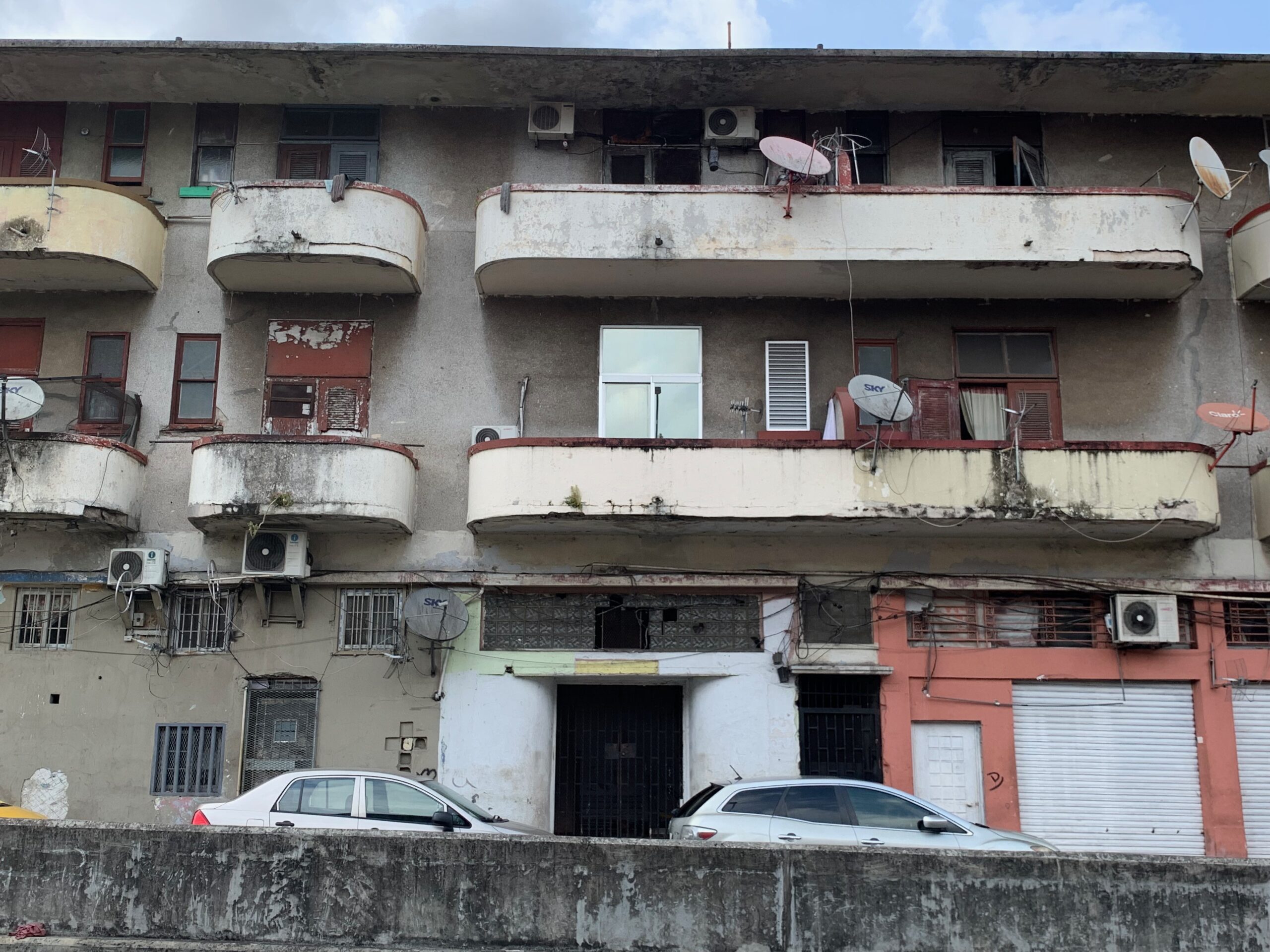
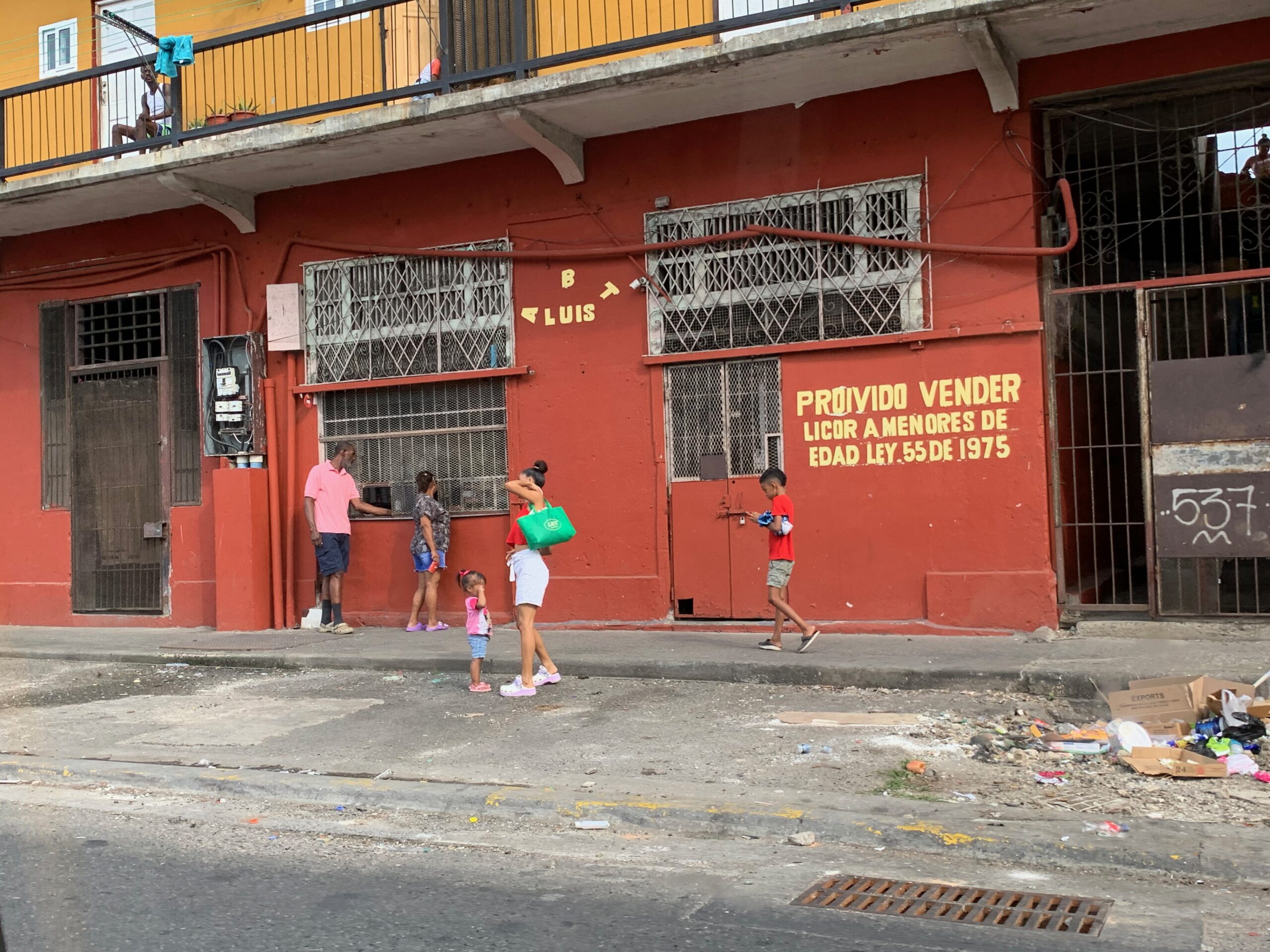
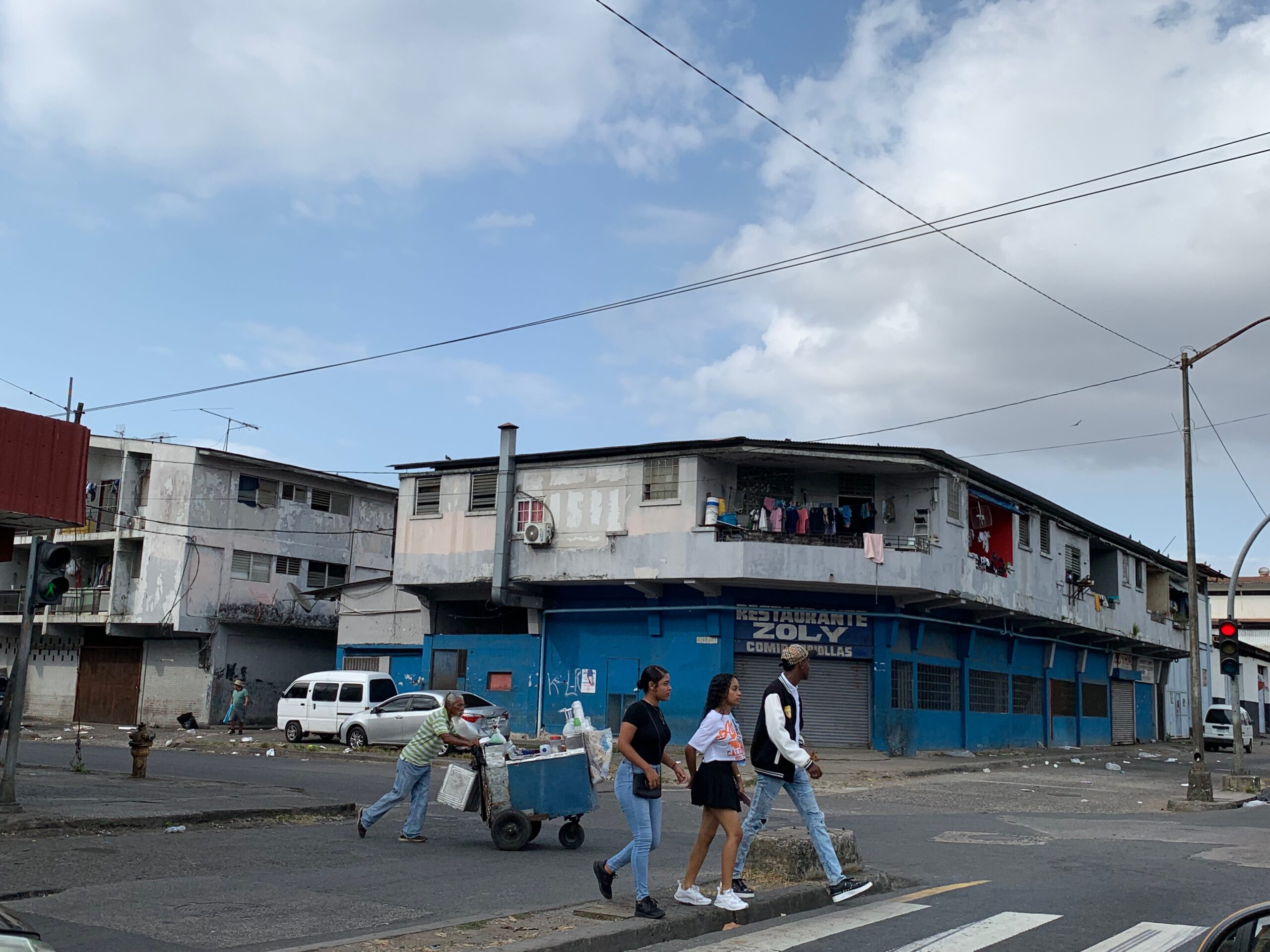
But what really dominates Panama is, of course, the Canal. There’s huge bridge, the Bridge of the Americas, that spans the estuary beside Panama City which is the start of the canal route from the Pacific end. I get a great kick from riding across it several times. One side affords a panoramic view to the Pacific; the other inland towards the Miraflores Locks.
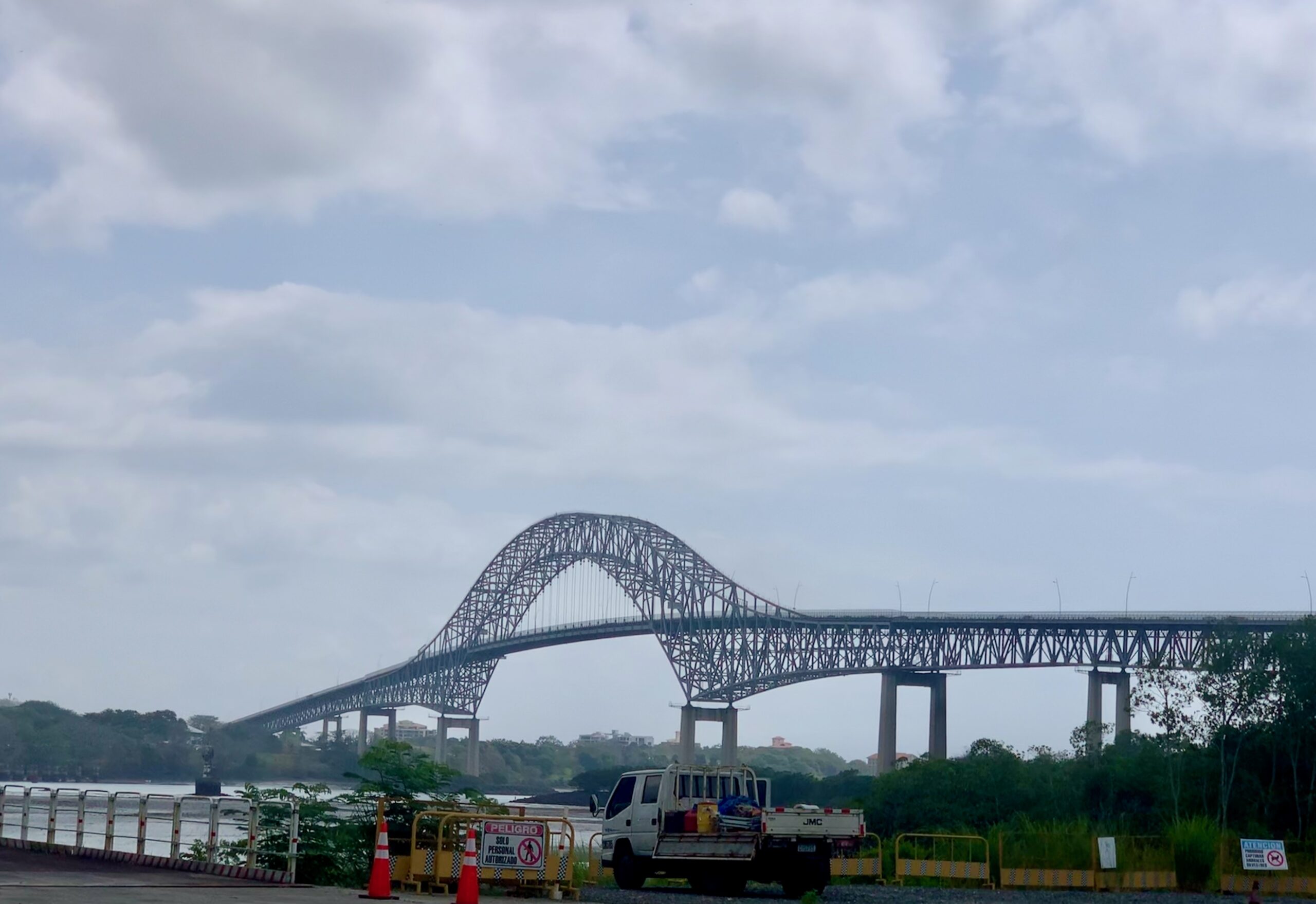
There is so much about the canal that I didn’t know before coming here that I feel ashamed at my erstwhile ignorance. Without going down a rabbit hole on the subject, for centuries, world powers, including Britain, France and Spain dreamed of linking the Atlantic and Pacific oceans through what is now Panama, thereby vastly shortening the trade route around Cape Horn and Tierra del Fuego. But it wasn’t until US president Theodore Roosevelt (he of Teddy Bear fame) took the notion by the scruff of the neck that anything really happened. In 1903, he supported what is now Panama breaking away from Colombia, which then ruled the area, despite local opposition. And immediately Panama created itself as a separate state, the US got itself a lease on land through which it would build the canal.
The Americans succeeded where others, (notably the French) had failed, for two particular reasons. The first was that two medics, Carlos Finlay, a Cuban of Scots heritage, and Walter Reed, of the US Army Medical Corps, discovered separately and some years apart, that Yellow Fever was spread by mosquitos. Malaria and Yellow Fever had killed thousands of workers on previous efforts to build a canal but because of what Finlay discovered and Reed brought to fruition, it became possible to control the diseases and therefore protect workers building the canal.
The second was the genius of the US canal project’s unqualified but self-taught engineer, John Stevens. He adapted, and used as a solution, what others had seen as a problem. Previous efforts to build a canal along the valley of a river, the Chagres, turned to a nightmare in the rainy season when it became a raging torrent, impossible to control, impossible to work with. Instead of fighting it, Stevens decided to dam the river, thereby creating a huge lake — an inland “sea” — that itself became part of the canal. In effect, Stevens made an inland ocean between the other two. It is known now as Gatun Lake, and links the Atlantic and Pacific oceans by canals and locks on either side of it. These lift and lower ships to and from sea level, and they then sail across the lake and, yes, some traditional canal waterway as well. This, rather than a single man-made linear man-made waterway, is the Panama Canal.
“A human triumph and one of the great stories of all time,” Morgan Freeman tells audiences at the IMAX cinema in the visitor centre at the Miraflores Locks at the Panama City end of the canal. And I guess it is. Creating the lake didn’t solve everything; some traditional canal had to be carved (and blasted) out of the landscape. They had to dig — and blast their way — to create a mile long trench that was 350 feet deep through the most challenging part of the terrain. George Washington Goethals, who succeeded Stevens as chief engineer, used 30 million kilos of dynamite (more than that used by the US Army in any conflicts to sate at that time) to create the Culebra Cut, slicing through the Continental Divide, the mountain range extending the length of the Americas and from which rain waters drain into the oceans on either side. When creating it, workers christened it Hells Throat.
Reflecting attitudes of the time, workers were treated on a racist basis, with different rates of pay according to the colour of a person’s skin. On. what was known as the Silver Roll, black West Indians received the lowest pay — 0.10 cents an hour with a maximum possible income of $30 a month. Panamanians, Colombians and Indians got 0.13 cents an hour, while Europeans (ie whites), other Caucasian ethnicities and, oddly given the treatment of black West Indians, black Africans, all got 0.16 cents an hour — even though everyone on the Silver Roll did exactly the same work. At least none of this is hidden today — it’s all explained in the Museo del Canal.
Today, the canal carries 300 million tons of goods a year. It’s been expanded and widened and parallel channels have been added in recent years but the fundamental structure remains pretty much as it was created over a century ago. The 82 kilometer long waterway knocks 3,000 miles, and three weeks, off the east/west, west/east trade route, and takes just 10 hour to pass through. Amazingly, there are also no pumps involved in filling and emptying the locks at either end — it’s all done by gravity — and hydroelectricity from the dam generates all electricity needed.
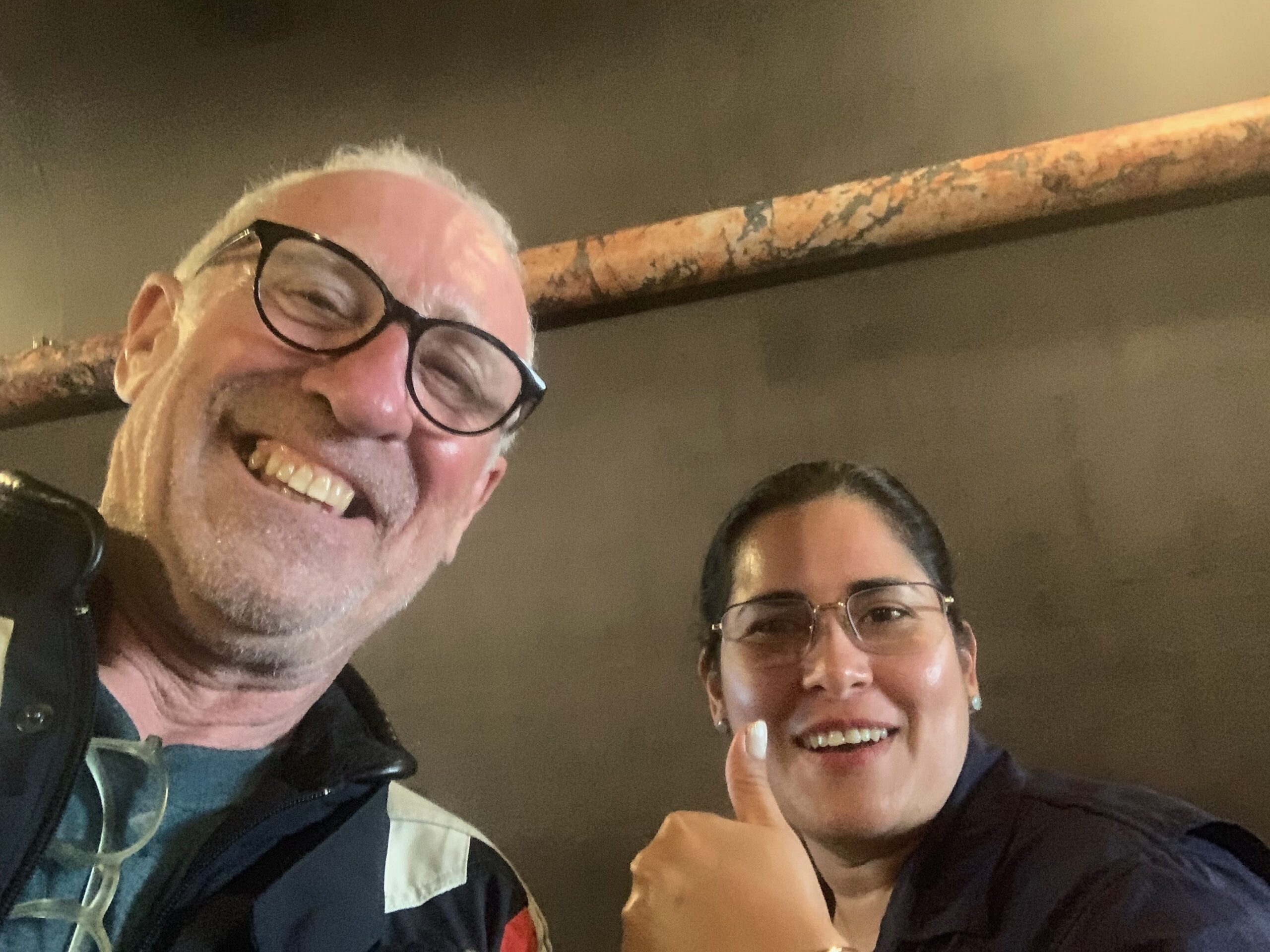
After the IMAX presentation, I’m walking out onto the Miraflores locks viewing area when the ticket inspection lady asks where I’m from. Ireland I say, without dallying as there others in the queue behind me. But before I can exit, she bursts into Molly Malone — “Alive, Alive Oh Oh; Alive, Alive Oh Oh” — and suggests a selfie!
Out on the viewing area, tourists vie for position, craning their necks to get a good view — and picture — of a ship entering the lock.
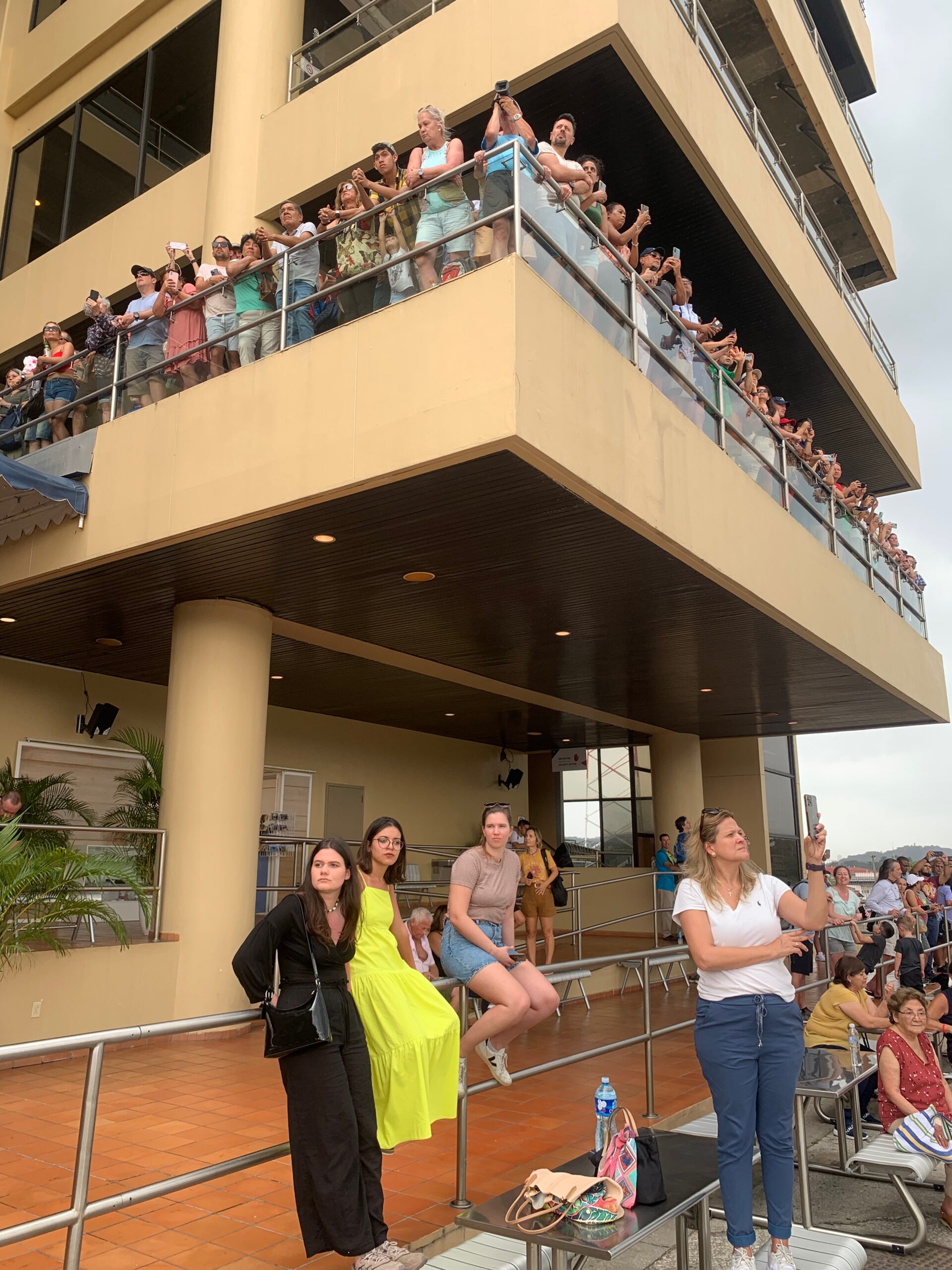
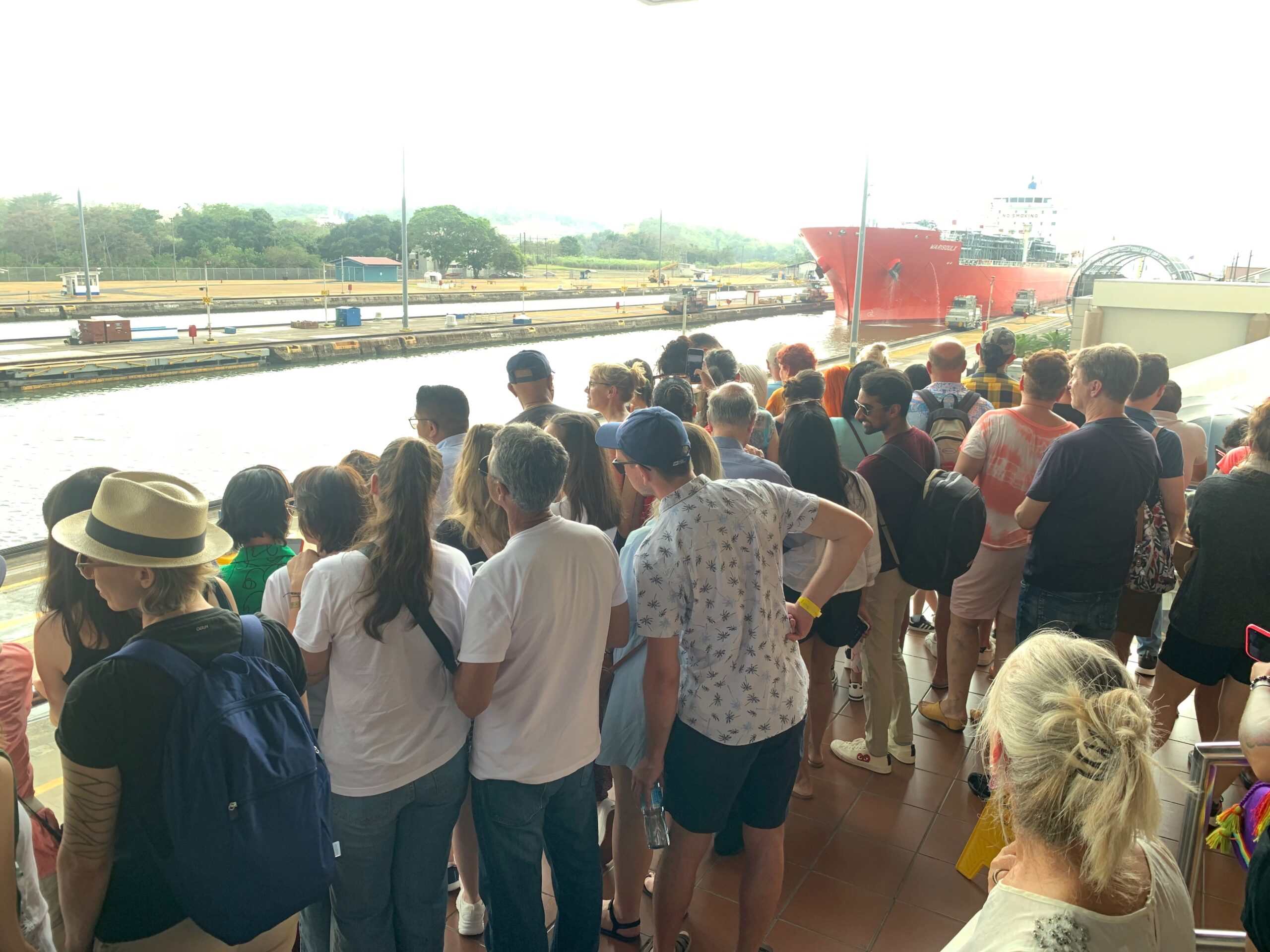
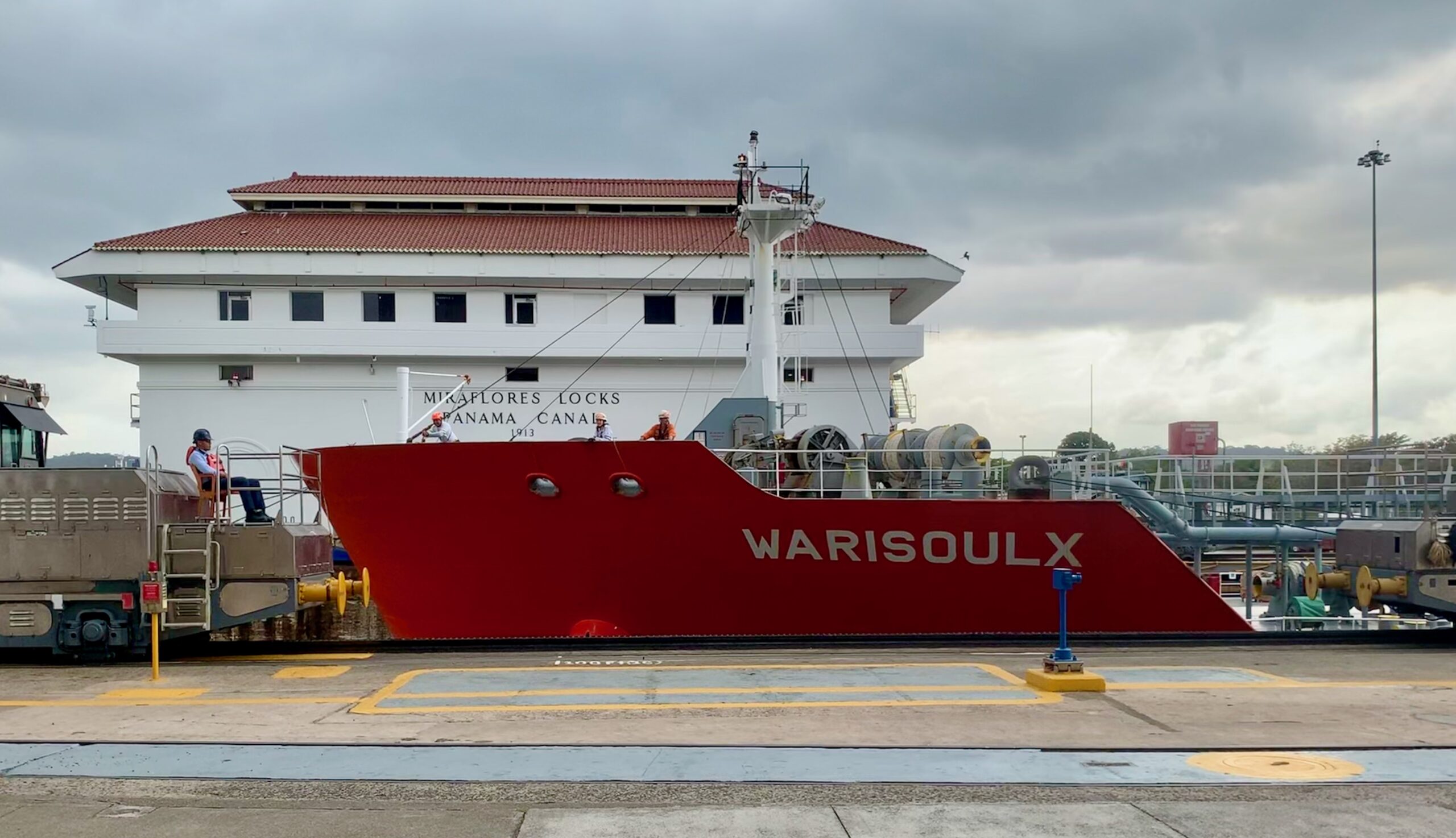
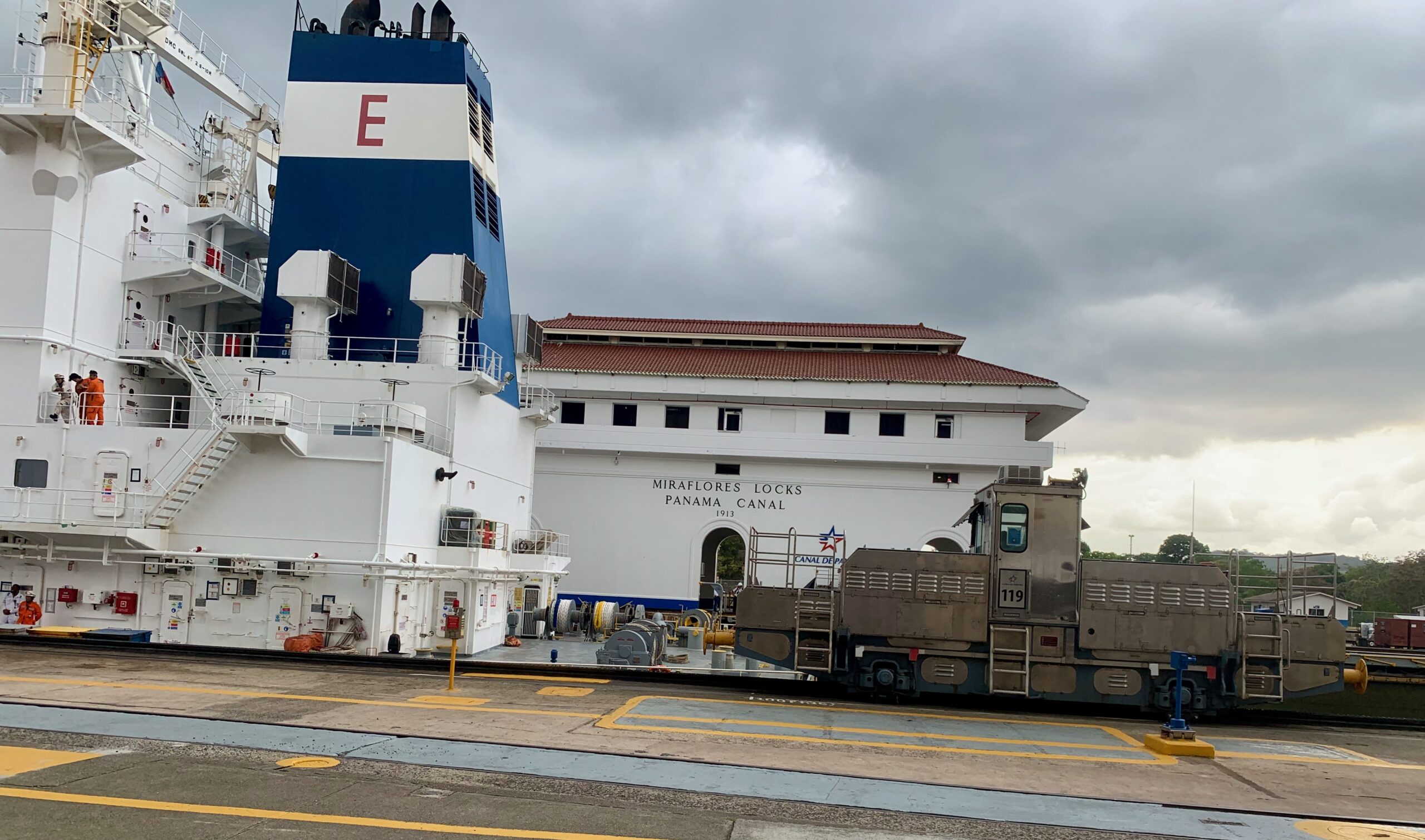
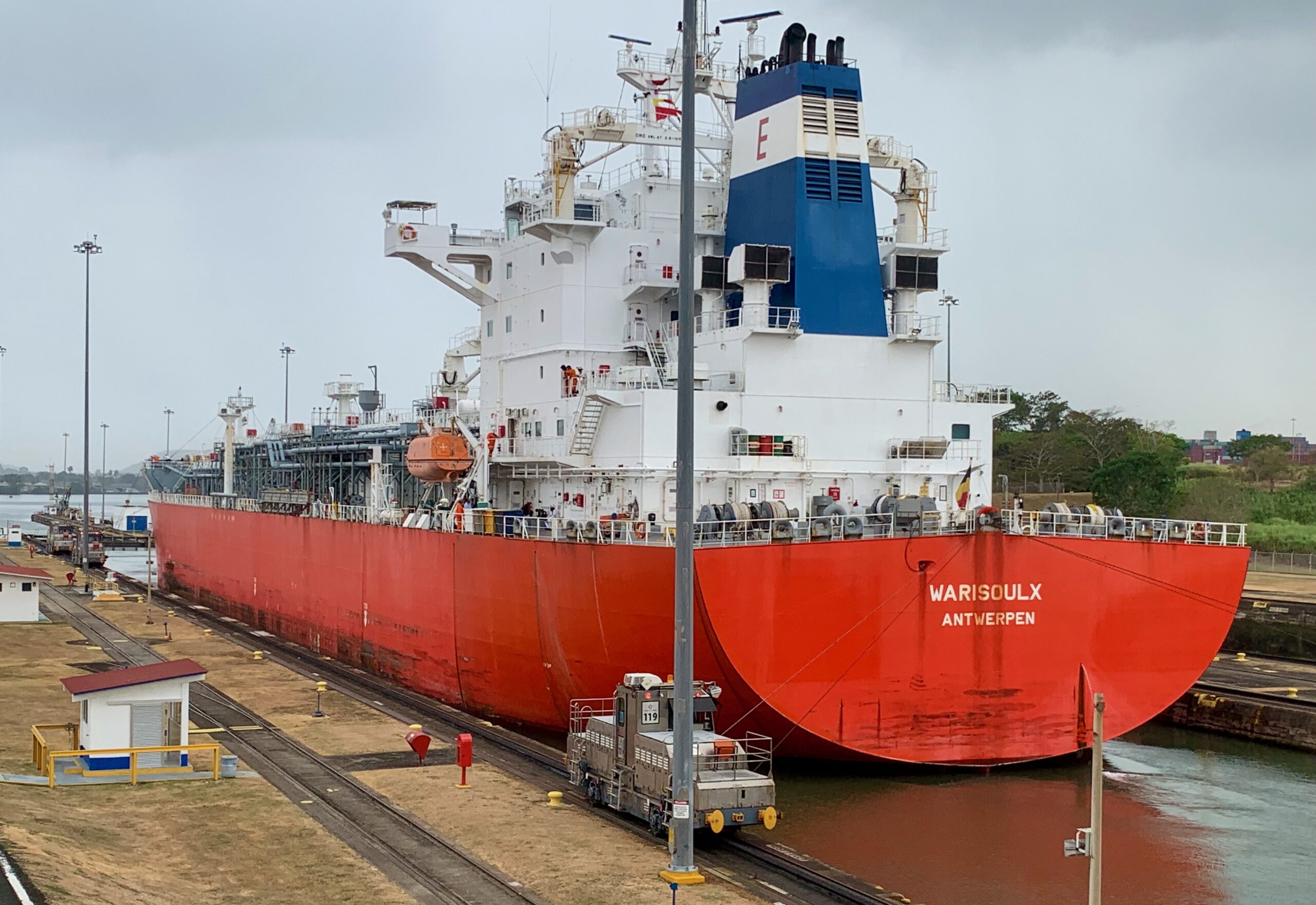
The ship is the Antwerp-registered Warisoulx, a 28,000 ton liquid petroleum tanker, carrying 38,000 cubic meters of gas. It inches its way into the lock, the first of that afternoon’s east to west traffic. The ship is tethered on either side, forward and aft, to little trains, called mules, that seem to haul her along the towpath but are actually just steering her, keeping her straight while she’s in the locks and not touching the side walls. The ship is actually moving forward on her own engine power. It takes just eight minutes to empty the lock and allow her to enter the next, lower level lock — one stage closer to the Pacific. It’s quite a spectacle really, seeing something that enormous moving across the landscape, as it were. What a clever fellow John Stevens was and I just love the idea that he was a self-taught engineer.
The Americans held onto the canal — pretty much literally — for a century, only ceding control back to Panama under a 1978 treaty, negotiated by President Jimmy Carter, but not implemented until 1999, after the US invaded and deposed its drug trafficking dictator, General Manual Noriega. Panama is now a fairly healthy democracy.
**
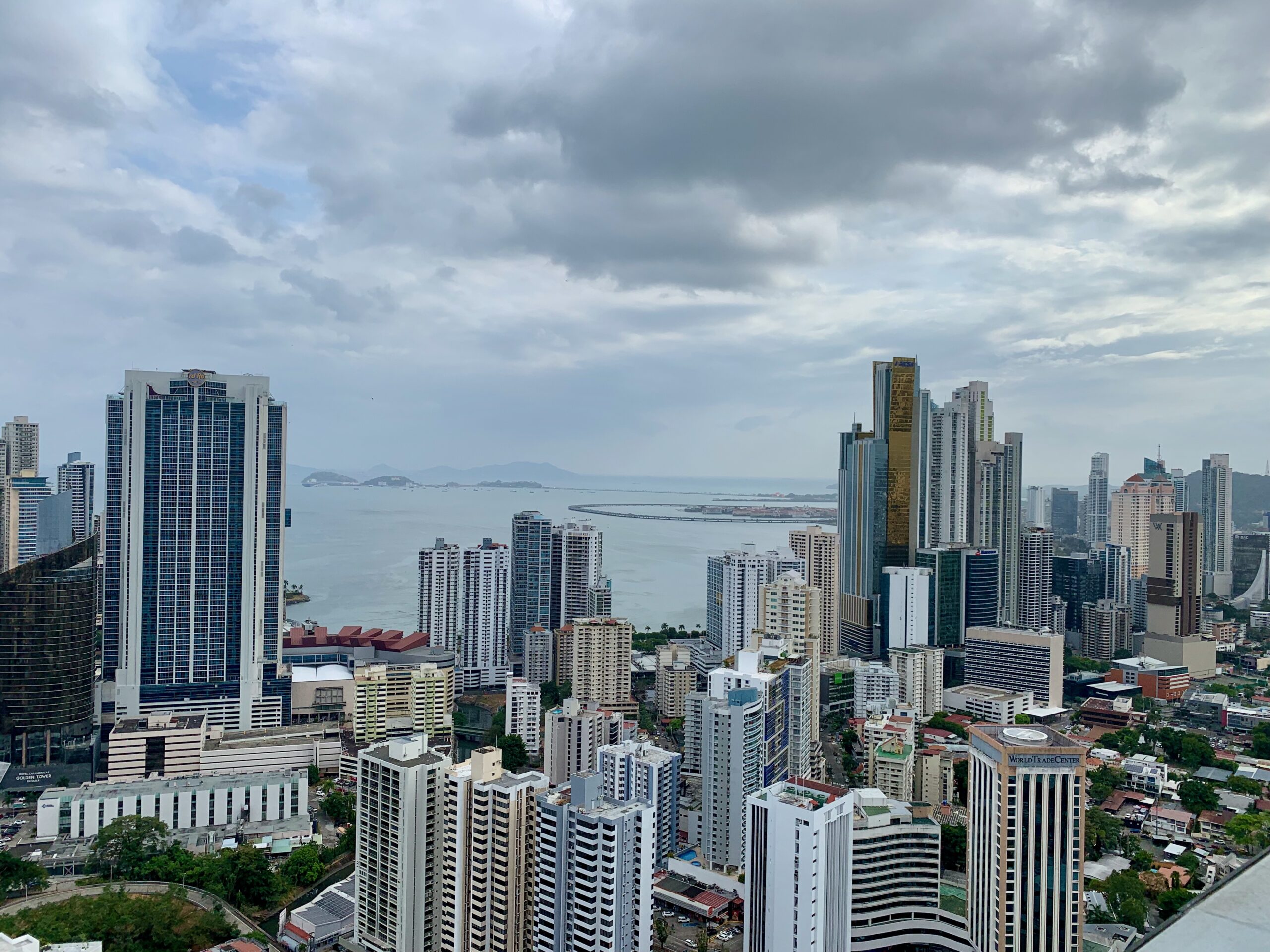
Footnote: I got to see inside the Corkscrew . . . and the view from it — wow! This is how.
When I started this journey, I obtained motorbike insurance (third party) in Argentina that covered me for there and all countries that shared a border with Argentina, which meant Chile and Bolivia. Peru was therefore not included but I didn’t really think about it until Ecuador, for reasons that escape me. However, I then did nothing about it, either there or in Colombia. It was only when fellow biker Jens Floss mentioned, as we waited to get our bikes air freighted out of Colombia to Panama, that in Colombia if you are involved in an accident, for whatever reason, and you do not have insurance, they put you in jail immediately until everything is sorted out. The same applies, apparently, in Panama.
So the day before I left Colombia, I Googled “motorbike insurance in Panama” and up came a list. I emailed two companies but got no response. On Monday, I tried again and, using the stick-a-pin-in-a-list selection mechanism, phoned a company named Panama Insurance, thinking, well, hopefully it does what it says on the tin. A woman replied, said she was actually in a meeting but, yes, she could help. Was I on WhatsApp? Yes, I said; good, she said, I’ll get back to you in a few minutes.
Sure enough, Ping! Chantal Valenzuela is inside my phone looking for reg details and a copy of my driving licence. I ping them back to her. Do you have the Panama customs certification of the motorcycle? I did and pinged that over too. Next was my passport. Ping! I will send you a quote, she replied, the premium is $65. I said that was fine; she said I needed to fill in a form; I said shall I drop over to your office. She said we’re in the F&F Tower.
“Ha! The Corkscrew?” I replied.
“Yes,” she said, “this beautiful and iconic building. . . Do you want to come visit.”
I was there in a minute!
It’s totally amazing. And the way the architect twisted each floor has the effect of creating triangular balconies for every level, at each corner. Clever, no?
“I can’t go out there,” said Chantal, as I sat in front of her desk, “it’s the only place I can’t go.”
One of her Girls Friday brought me onto one of the balconies — 42 floors up; I nearly wet myself. But the views from there, and from inside the offices, were just amazing. Skyscraper Panama City-cum-Manhattan-cum-Dubai is all around you, and then the Pacific beyond.
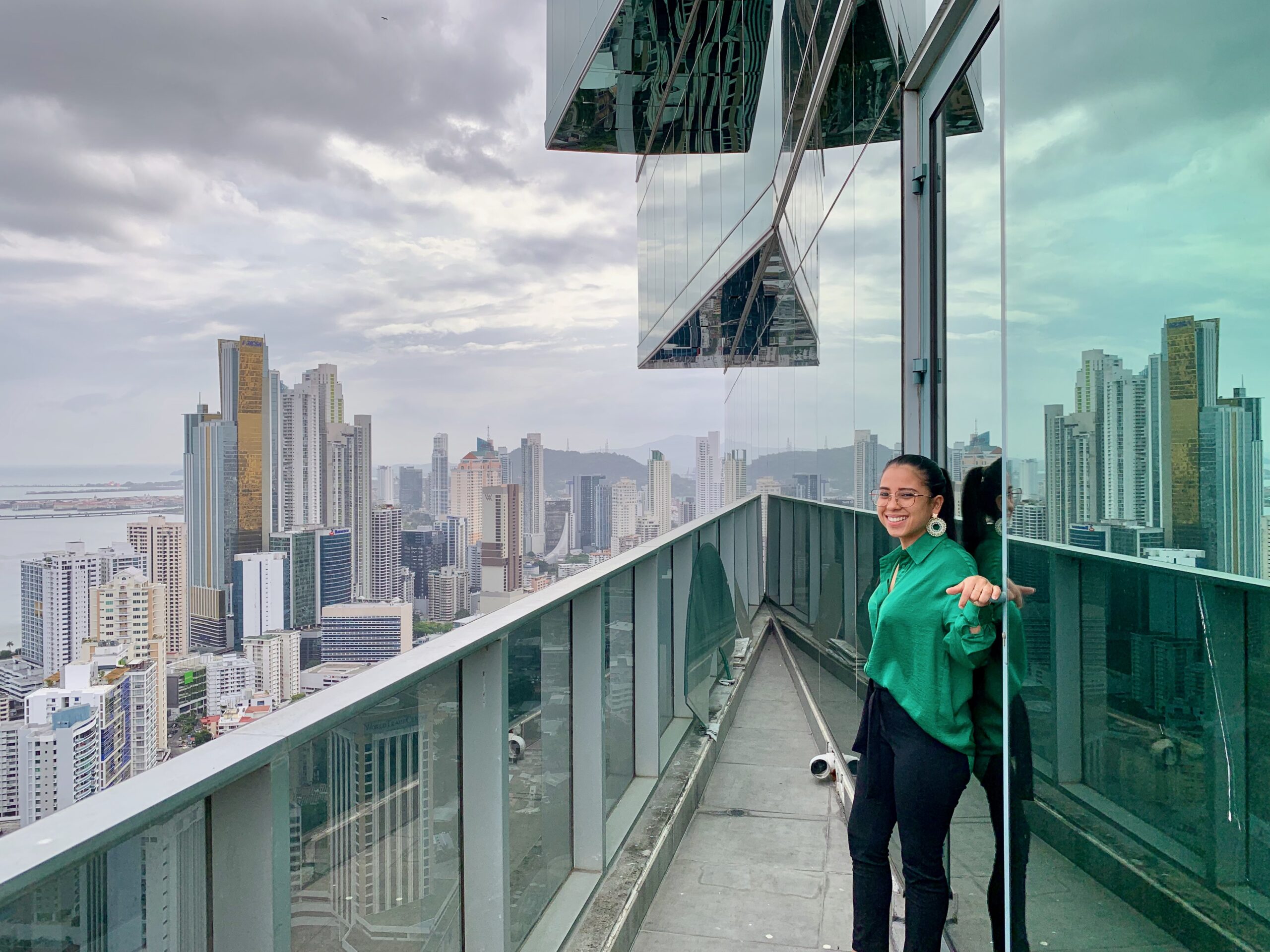
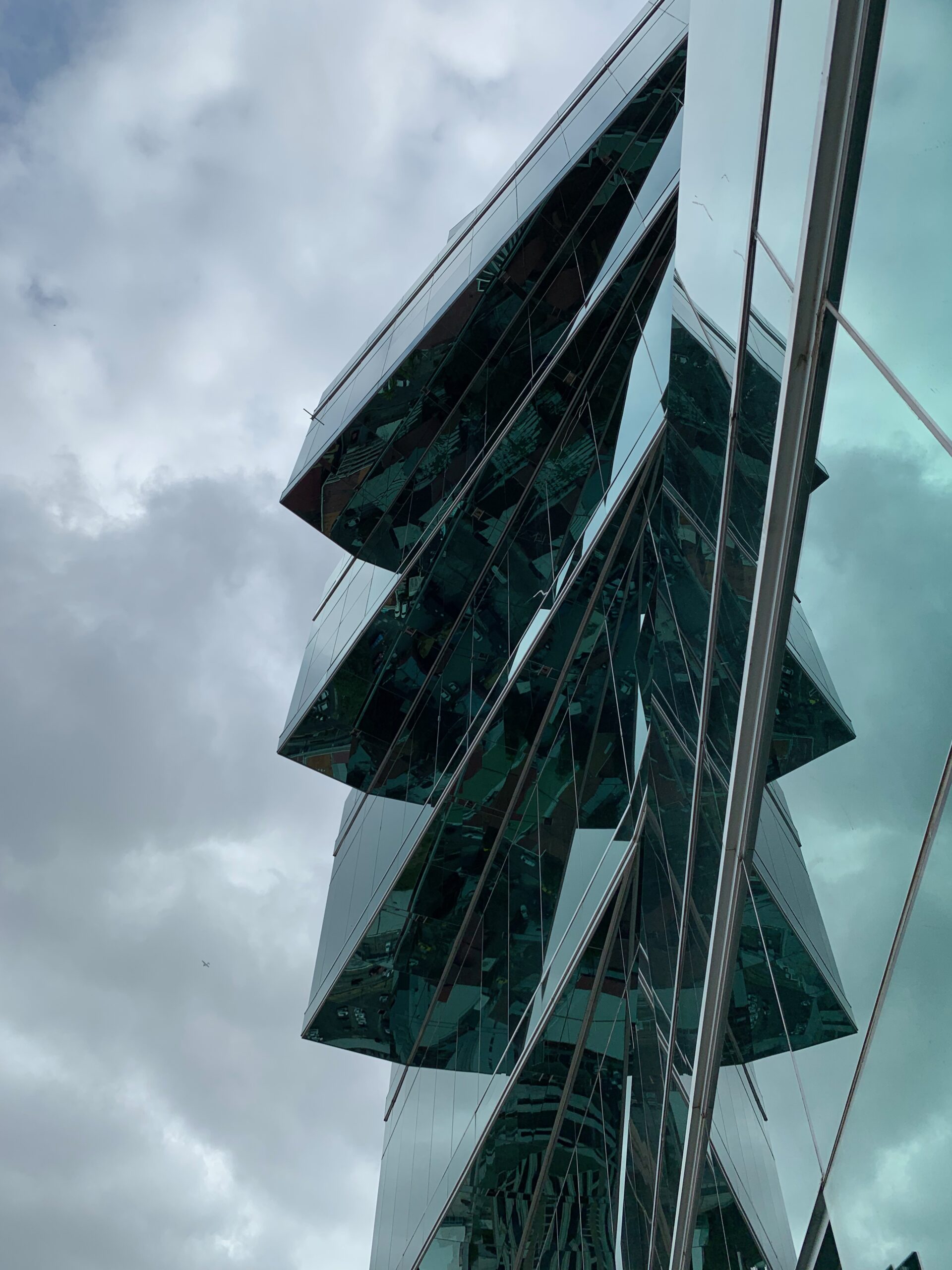
There I was in T-shirt, trainers and shorts, hopping about the place like a teenager and there was Chantel, sophisticated and calm, warm and funny and, I think, very smart, possibly a bit amused (maybe even bemused) at this eejit in her office. She does all kinds of insurance and also trades in bonds, she and her eight or 10 colleagues. They’re all women (so the place runs smoothly and is really nice looking), save for two men but I didn’t see anything of them.
I left after 15 or 20 minutes, armed with an insurance certificate that will, hopefully, keep me out of jail. Thank you Chantal!
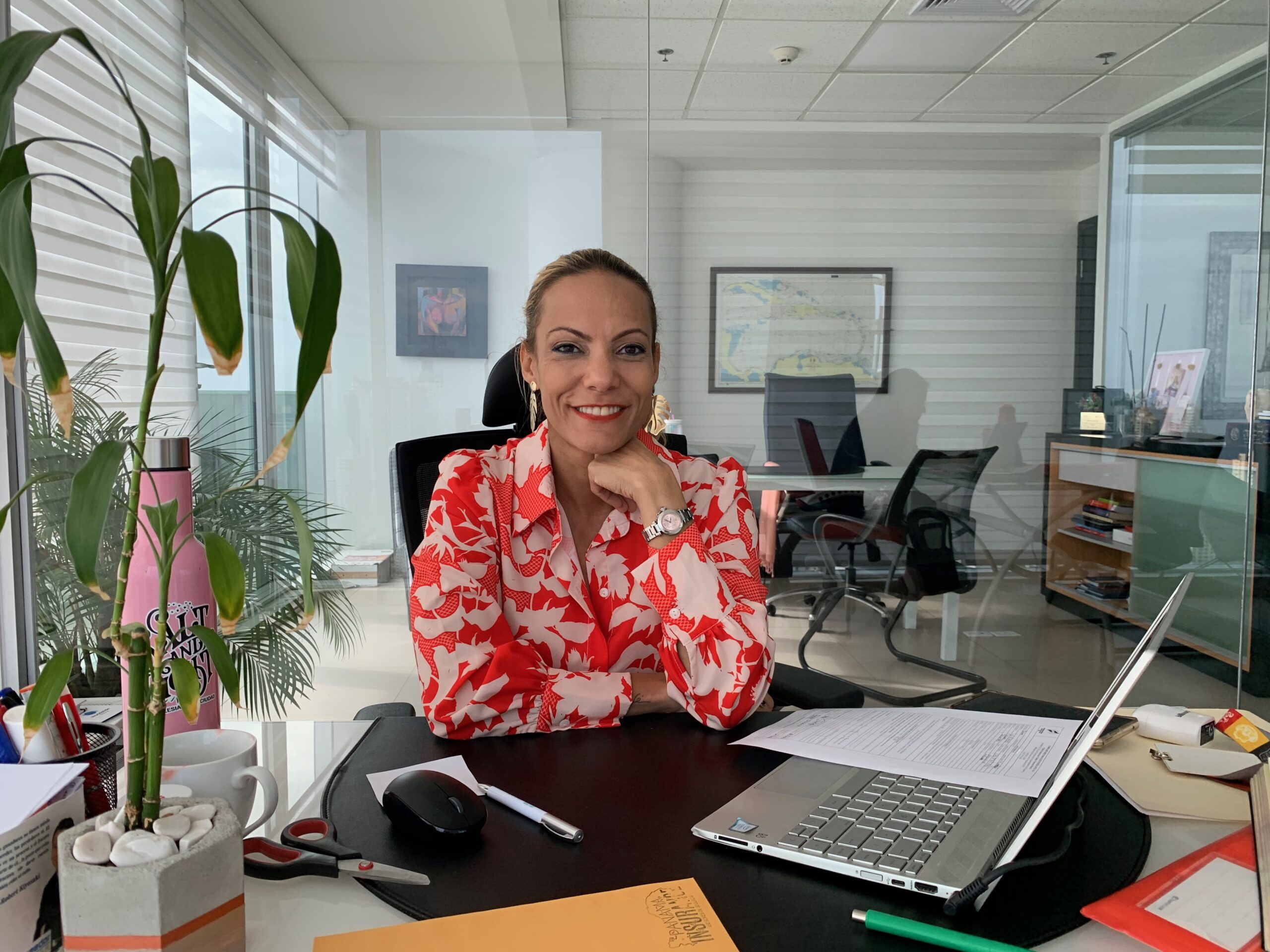
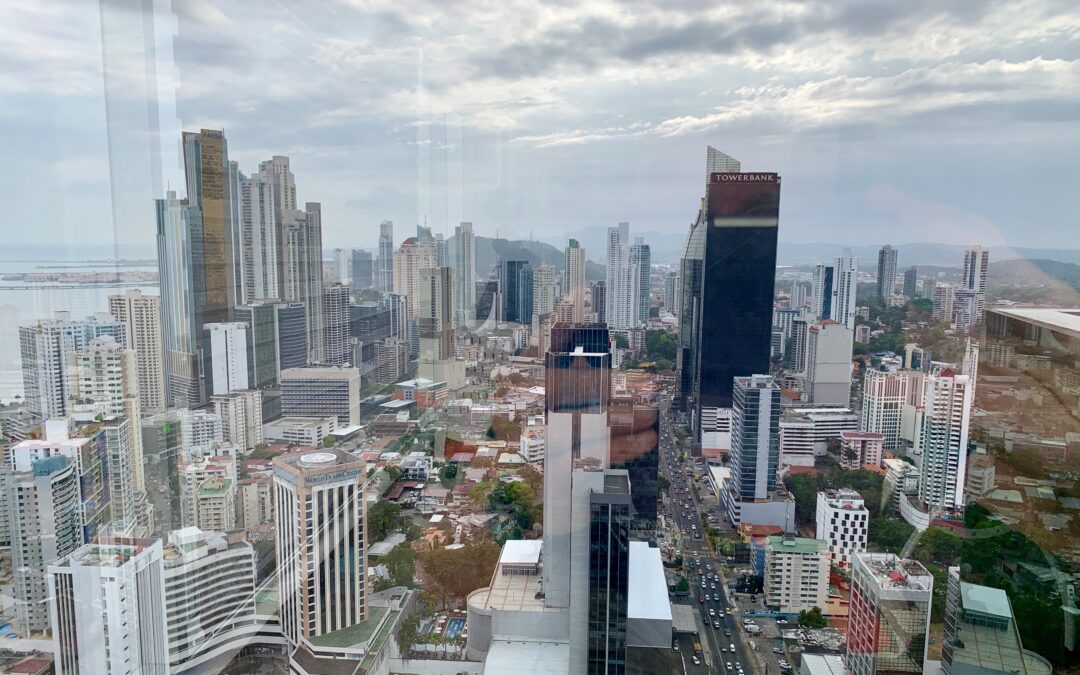
Muy interesante.
Very interesting. I had been in Panama in the early 80s and don t remember seeing any of these impressive buildings nor a canal museum. Really enjoyed all the information. Well done Peter
Hi Peter I can honestly say your blogs are the best I have read and continue to devour!
Backpacked in Panama a few years ago and thoroughly enjoyed my stay in the old city. To get to Miraflores via local bus required me to walk to the main bus station through some areas which locals described as dangerous. Happily got there in one piece and the spectacle of those ships travelling through the locks was memorable. Looking forward to your travel through Nicaragua and Guatemala. Both are spectacular countries
Great blog again! Aye, Panama is fascinating, and the canal amazing. Good to see you coming out of your normal shy, introverted shell and chatting to folks, especially young women in mad skyscrapers 🙂
Great scéal re Panama and it’s canal
Liked the fact that he flunked the exams! Went through the canal in 1969 going east on a cargo ship and what I remember best are the mules!! And the engineering!
Lean ar agaidh agus tabhairt aire
Deasun
Very interesting. I had been in Panama in the early 80s and don t remember seeing any of these impressive buildings nor a canal museum. Really enjoyed all the information. Well done Peter